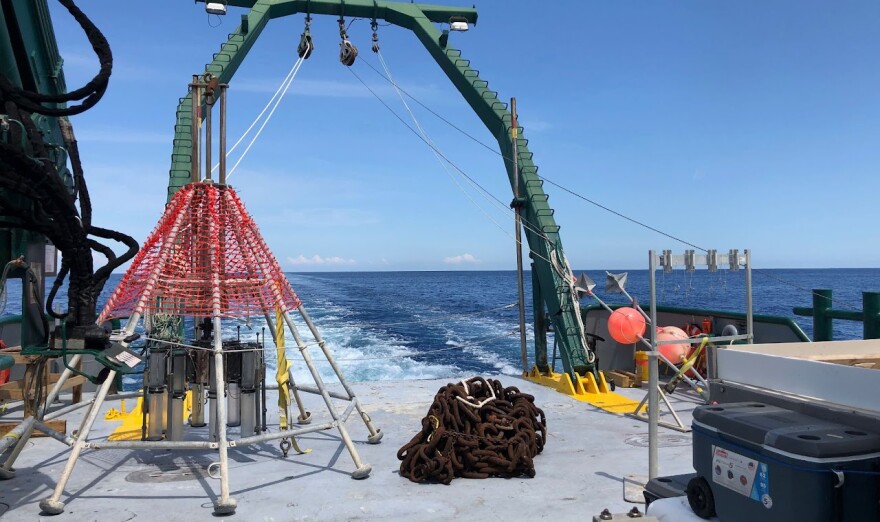Tampa Bay area researchers and college students recently returned ashore after an eight-day excursion collecting data from the Gulf of Mexico.
They were aboard the Research Vessel Weatherbird II, a boat equipped with advanced laboratories and sensor technology.

With each working three days on the water, about 20 students from Eckerd College and the University of South Florida collected samples from the sea floor and the water column from May 14-21.
They are part of the "Scientist at Sea Program," a collaboration among the colleges, Tampa Bay Watch and the U.S. Geological Survey. The project offers underrepresented students the opportunity to document climate change and the lingering BP Deepwater Horizon oil spill impacts from 2010.
The scientists and students used a six-foot tall cylindrical cage that contained 12 or so bottles, which were triggered to close, collecting sediments from the seafloor. Below that, an instrument containing multiple sensors measured different things, such as temperature, salinity, and oxygen.
The results could possibly be released later this year, after being analyzed by summer interns and fall semester students. But Patrick Schwing, one of two co-principal investigators from Eckerd College, noted some obvious changes while on the water.
"There were changes in the amount of oxygen in the surface sediments,” he said. “We actually saw a change that lasted three to five years after 2010, in which there was less oxygen than previously. And we saw that recovery gradually come back to sort of a new normal, that impacted a lot of the organisms that lived on the seafloor."

Citing the work of USF fisheries biologist and marine ecologist Steve Murawski, Schwing said large storms can stir up some of the oil compounds and increase toxicity again. It’s estimated that it will take between 50 to 100 years before it will be completely buried below that layer of re-suspension.
Alexis Vargas, 20, is a rising junior at Eckerd, and a marine science major on the geology track. She said she eventually wants to be professional researcher in the field and the lab.
Vargas worked the 12 a.m. to 12 p.m. shift, as the crew worked around the clock. She said at first, she was nervous about being seasick, but eventually got over that and was able to focus. Some of her responsibilities included labeling sample bottles and transferring the seafloor contents from the deployment tools to fresh containers on the boat.

“I was very shocked at first, but then I had gotten used to it because there was a lot of free time … because there was transit. And also, there wasn't a lot of people moving about, like during the day, but we were able to just sit in the galley a lot. And watch movies, study a lot for our upcoming finals,” she said.
Vargas did not seem impressed by the Caddyshack and Reservoir Dogs DVDs, but she gave the overall experience at 10 out of 10.
"I was also able to think more, you could say like, globally, because this isn't something that only happens here. It happens other places,” she said. “I was very excited about that."
Rebekka Larson, co-principal investigator with Eckerd onboard, said the most memorable part of the experience was observing the evolution of the students.
“Watching the students kind of light up, and really kind of start to see that, when they come out of this on the other side, they might look at things differently, because this experience has fundamentally changed how they view things,” she said.
Gregg Brooks, the principal investigator with Eckerd, said he was struck by the students’ initiative.
“The students just did not hesitate and jumped out,” he said. “Being on a big research vessel can be intimidating at first, and especially when we're there in the middle of night.”
Brooks said he hopes to get more women and people of color interested in geoscience.
"So that they continue on and they become the next group of experts that are that are going to have to address some of these problems that are facing us," he said.
The National Science Foundation is funding the project with a nearly $400,000 grant over three years. When that funding ends, the partners have agreed to continue this effort on their own.






